
Multisensory Research
Scope & Guideline
Fostering Collaboration in Multisensory Studies
Introduction
Aims and Scopes
- Multisensory Integration Mechanisms:
The journal focuses on the underlying processes and neural mechanisms involved in multisensory integration, investigating how different sensory modalities combine to influence perception and behavior. - Crossmodal Correspondences:
Research exploring the relationships between different sensory modalities, such as how auditory stimuli can influence visual perception and vice versa, is a key area of focus. - Developmental and Clinical Perspectives:
The journal includes studies on how multisensory processing develops over the lifespan and how it may be altered in various clinical populations, including individuals with autism, dyslexia, and sensory processing disorders. - Applications in Technology and Therapy:
Research that applies findings from multisensory perception to fields such as virtual reality, rehabilitation, and sensory therapies is also emphasized, showcasing the practical implications of multisensory studies. - Cognitive and Behavioral Outcomes:
The journal investigates how multisensory experiences affect cognitive functions, such as memory and attention, as well as behavioral outcomes in different contexts.
Trending and Emerging
- Impact of COVID-19 on Sensory Function:
Recent publications have highlighted the effects of COVID-19 on sensory functions, particularly olfactory perception, indicating a growing interest in understanding the multisensory implications of health crises. - Neuroscientific Approaches to Multisensory Processing:
There is an increasing trend towards employing neuroscientific methods, such as TMS and neuroimaging, to investigate multisensory integration, reflecting a desire to understand the neural basis of these complex processes. - Application of Multisensory Research in Technology:
Emerging themes show a focus on the application of multisensory principles in technology, particularly in virtual reality and interactive systems, demonstrating the relevance of multisensory research in modern technological contexts. - Individual Differences and Sensory Processing:
Research examining how individual differences, such as autistic traits or sensory sensitivities, influence multisensory integration is gaining traction, suggesting a shift towards personalized approaches in understanding sensory processing. - Crossmodal Effects in Learning and Memory:
There is a growing interest in how multisensory experiences can enhance learning and memory, particularly in educational contexts, indicating the practical implications of multisensory research in pedagogy.
Declining or Waning
- Traditional Sensory Modalities:
Research focusing exclusively on traditional sensory modalities (like vision or hearing in isolation) is becoming less common as the field moves towards more integrative studies that emphasize multisensory interactions. - Basic Psychophysical Studies:
Papers focusing solely on basic psychophysical measurements without a multisensory context are less frequent, indicating a shift towards more complex, real-world applications of multisensory research. - Static Sensory Interactions:
Studies that examine static or non-interactive sensory stimuli are declining as the journal increasingly prioritizes dynamic, interactive multisensory experiences that reflect real-life situations.
Similar Journals

Cognitive Processing
Elevating discourse in cognitive neuroscience and beyond.Cognitive Processing, published by SPRINGER HEIDELBERG in Germany, is a leading journal dedicated to advancing the understanding of cognitive processes through interdisciplinary research. With its ISSN 1612-4782 and E-ISSN 1612-4790, the journal covers a diverse range of fields including Artificial Intelligence, Cognitive Neuroscience, and Experimental and Cognitive Psychology, making it an invaluable resource for researchers and professionals alike. While it currently does not operate under an Open Access model, it is well-regarded within the academic community, holding a respectable impact factor and ranking in the Q2 and Q3 quartiles as of 2023. The journal aims to foster innovation and collaboration among scholars, presenting high-quality original research, reviews, and theoretical discussions that bridge the gap between cognitive science and its practical implications. With a convergence of research from 2005 to 2024, Cognitive Processing continues to play a critical role in the evolving landscape of cognitive science literature.

PSYCHONOMIC BULLETIN & REVIEW
Unveiling the Complexities of Mind and Behavior.PSYCHONOMIC BULLETIN & REVIEW is a premier journal published by SPRINGER, dedicated to advancing the fields of psychology, particularly within the domains of Arts and Humanities, Developmental and Educational Psychology, and Experimental and Cognitive Psychology. With its ISSN 1069-9384 and E-ISSN 1531-5320, the journal serves as a vital resource for researchers, professionals, and students striving to stay at the forefront of psychological science. The journal boasts an impressive impact factor and ranks in the top quartile (Q1) in relevant categories, reflecting its prestigious standing in the academic community. Covering research from 1994 to 2024, it offers rich interdisciplinary insights into psychological processes and theoretical developments, supporting researchers in disseminating their findings effectively. While not an open-access journal, it provides various access options to ensure that vital research remains within reach of its audience. With a commitment to fostering scholarly dialogue and innovation, PSYCHONOMIC BULLETIN & REVIEW plays an indispensable role in shaping contemporary psychological discourse.

PSYCHOLOGIA
Innovating Research in the Heart of PsychologyPSYCHOLOGIA is a distinguished academic journal published by the Psychologia Editorial Office, focusing on the broad field of psychology. Originating from Japan, the journal serves as a platform for innovative research and insights into various psychological phenomena, contributing significantly to the advancement of psychological knowledge since its establishment in 1996. With an ISSN of 0033-2852 and an E-ISSN of 1347-5916, PSYCHOLOGIA primarily targets researchers, professionals, and students who are passionate about the intricacies of human behavior and cognition. Currently categorized in the Q4 quartile of psychology (miscellaneous) based on 2023 metrics, it holds a Scopus rank of #157 out of 216, indicating its developing presence within the academic community. Despite being published without open access options, the journal remains committed to fostering scholarly dialogue and disseminating significant findings that shape contemporary psychological research. As it converges towards its issue set for 2024, PSYCHOLOGIA continues to be an essential resource for those seeking to deepen their understanding of psychological sciences.
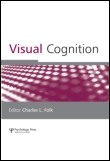
VISUAL COGNITION
Fostering Innovation in Cognitive NeuroscienceVISUAL COGNITION, published by Routledge Journals, Taylor & Francis Ltd, is a leading academic journal dedicated to the nuanced understanding of visual processing and cognition. Since its inception in 1994, the journal has become a pivotal resource for researchers and practitioners in fields including Cognitive Neuroscience and Psychology, having achieved a distinguished Q1 ranking in Arts and Humanities and impressive standings among its peers in experimental and cognitive psychology. With an impact factor reflecting its scholarly significance, VISUAL COGNITION serves as a forum for high-quality research articles that shed light on the cognitive aspects of visual perception. Although it operates under a subscription model, the journal remains committed to disseminating knowledge that inspires both established and emerging scholars alike. For those interested in the latest advancements in visual cognition, this journal promises a wealth of insights and rigorous scholarly dialogue.
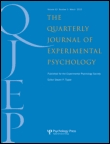
QUARTERLY JOURNAL OF EXPERIMENTAL PSYCHOLOGY
Pioneering Discoveries in Human BehaviorQuarterly Journal of Experimental Psychology, published by SAGE Publications Ltd, is a leading peer-reviewed journal that serves as a vital resource in the fields of experimental and cognitive psychology, neuropsychology, and medicine. With an impactful contribution to psychological research, the journal is recognized for its rigorous methodology and empirical studies, holding a notable ranking among its peers—finding itself in the Q2 quartile across several categories. With its origin tracing back to 2006, Quarterly Journal of Experimental Psychology significantly influences the academic discourse until its latest published findings in 2024. Catering to a diverse audience of researchers, professionals, and students, this journal provides Open Access options, enhancing the reach and accessibility of cutting-edge psychological research. By focusing on innovative approaches and findings, it aims to bridge theoretical understanding with practical application, hence fostering advancement in multiple related disciplines. For those committed to understanding the complexities of human behavior and cognitive processes, this journal remains an essential reference point.

PSYCHOLOGICAL RESEARCH-PSYCHOLOGISCHE FORSCHUNG
Elevating psychological research to new heights of excellence.Psychological Research – Psychologische Forschung is a renowned interdisciplinary journal published by Springer Heidelberg, operating from Germany. As a key publication in the field of psychology, particularly spanning areas such as experimental and cognitive psychology, developmental and educational psychology, and arts and humanities, this journal has made significant contributions to the advancement of psychological science since its inception in 1974. With an impressive impact reflected through its Q1 and Q2 categorizations across various fields, it occupies a prominent position in Scopus rankings, notably ranked #35 in Experimental and Cognitive Psychology. Researchers, professionals, and students alike benefit from its rich repository of original empirical studies, reviews, and methodological advancements. Whether you're seeking to contribute to your field or stay abreast of the latest developments, Psychological Research provides a crucial platform for disseminating innovative psychological knowledge. With a convergence of research years leading to 2024, the journal continues to evolve, maintaining its relevance and excellence within the academic community.
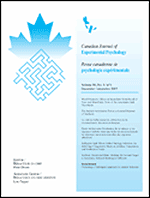
CANADIAN JOURNAL OF EXPERIMENTAL PSYCHOLOGY-REVUE CANADIENNE DE PSYCHOLOGIE EXPERIMENTALE
Innovative Insights into Cognitive ProcessesCanadian Journal of Experimental Psychology / Revue canadienne de psychologie expérimentale (ISSN 1196-1961, E-ISSN 1878-7290), published by the Canadian Psychological Association, serves as a vital resource in the fields of Experimental and Cognitive Psychology and general psychological research. With a respectable impact factor that places it in the Q3 category for both Experimental Psychology and miscellaneous Medicine (2023), this journal offers a platform for innovative research that furthers our understanding of psychological processes. Spanning years from 1993 to 2024, it connects researchers, professionals, and students to contemporary findings and methodologies, fostering a collaborative environment for the advancement of psychological science. Though it does not currently offer Open Access, the journal's commitment to quality and relevance in psychological research continues to make it an important part of the academic landscape, supporting the dissemination of knowledge within a global community.

Neuroscience of Consciousness
Exploring the Intricacies of Consciousness through NeuroscienceNeuroscience of Consciousness, published by Oxford University Press, stands at the forefront of interdisciplinary research in the realms of clinical psychology, experimental and cognitive psychology, neurology, and psychiatry. Since its inception as an Open Access journal in 2015, it has garnered a prestigious reputation, consistently ranking in the Q1 category across multiple fields, including a remarkable 15th rank in Experimental and Cognitive Psychology and 44th in Neurology. This journal serves as a vital resource for researchers, professionals, and students aiming to explore the complexities of consciousness through the lens of neuroscience. By providing a platform for original research, reviews, and critical analyses, Neuroscience of Consciousness enables the dissemination of innovative ideas and findings that contribute to the advancement of knowledge in this crucial area of study. Its open access model ensures that groundbreaking research is readily available to a global audience, further solidifying its impact in the academic community.
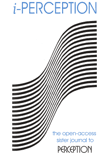
I-Perception
Pioneering New Perspectives in Perception StudiesI-Perception is a leading open-access journal published by SAGE Publications Ltd, specializing in the intricate interplay between perceptual processes across various disciplines such as Artificial Intelligence, Experimental and Cognitive Psychology, Ophthalmology, and Sensory Systems. With an ISSN of 2041-6695, this UK-based journal has been a vital resource since its inception in 2010. I-Perception occupies esteemed positions within several academic categories, including a Q2 ranking in Ophthalmology and Q3 rankings in both Artificial Intelligence and Experimental and Cognitive Psychology. These metrics highlight the journal’s relevance and impact, particularly in fostering interdisciplinary collaborations among researchers and practitioners. Accessible online, I-Perception encourages the dissemination of innovative findings and theoretical advancements, making it an essential platform for those passionate about understanding perception in its myriad forms. The journal's commitment to excellence is further reflected in its Scopus rankings, showcasing its influence within the respective realms of Medicine, Neuroscience, and Computer Science.
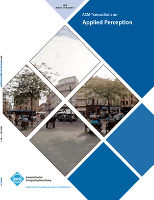
ACM Transactions on Applied Perception
Unveiling the Science of Perception through Computational LensesACM Transactions on Applied Perception is a leading journal published by the Association for Computing Machinery, focusing on the intersection of perception science and computational methods. With an ISSN of 1544-3558 and an E-ISSN of 1544-3965, this esteemed publication has been a vital resource for innovators and researchers since its establishment in 2004. It operates within the ambit of Computer Science and the realms of Experimental and Cognitive Psychology, boasting a commendable impact factor and category rankings, including Q2 in Computer Science (miscellaneous) and Q3 in both Experimental and Cognitive Psychology and Theoretical Computer Science. The journal's scope encompasses a plethora of studies aimed at understanding human perception through computational lenses, making it an essential platform for scholarly exchange. Although it does not currently offer an Open Access option, its extensive reach and rigorous peer-review process ensure high visibility and impact in the academic community. By fostering collaboration across disciplines, ACM Transactions on Applied Perception encourages advancements that bridge perceptual research with practical applications, making it invaluable for researchers, professionals, and students engaged in this dynamic field.